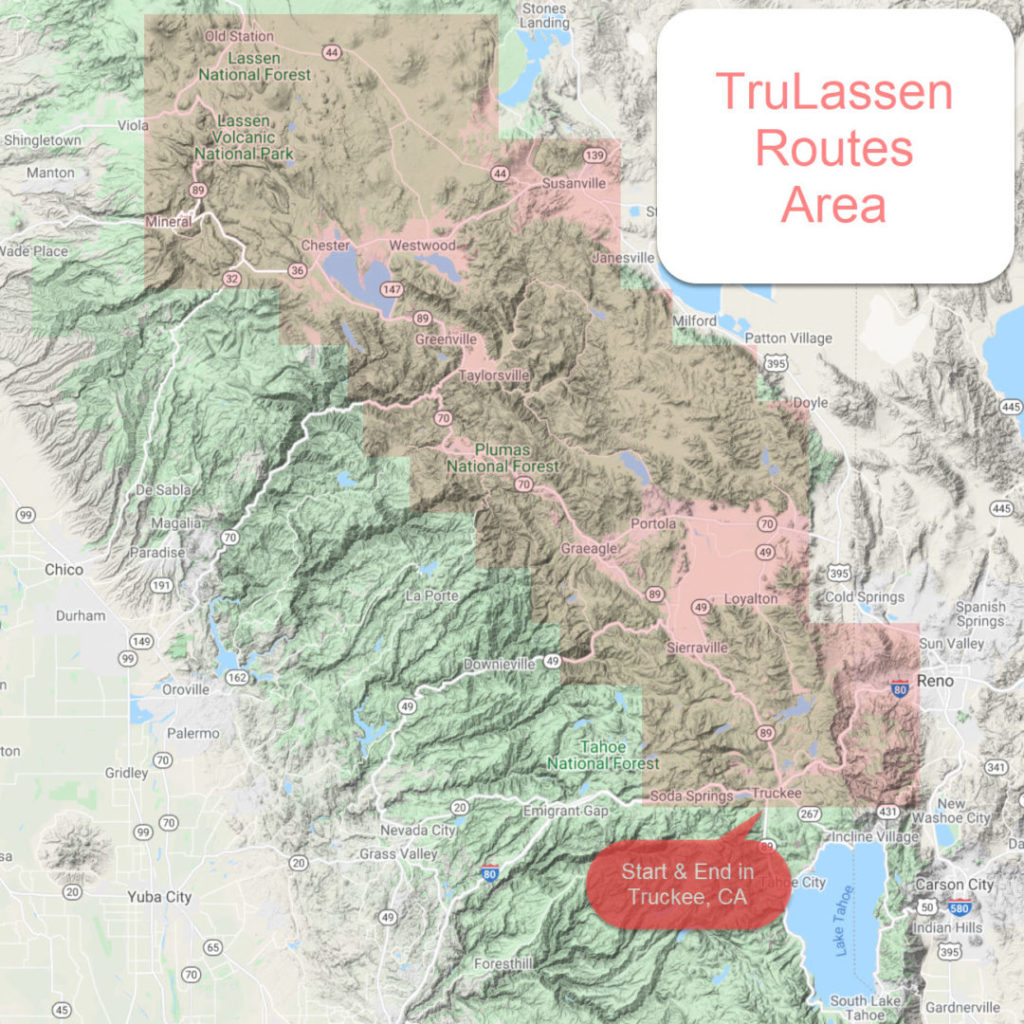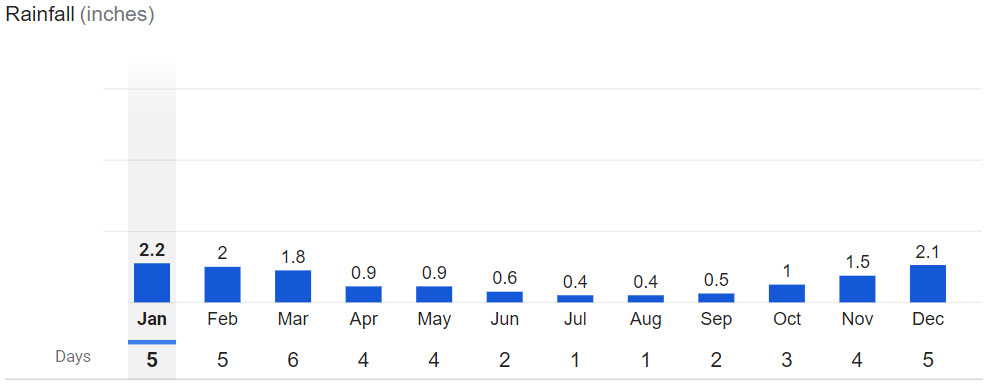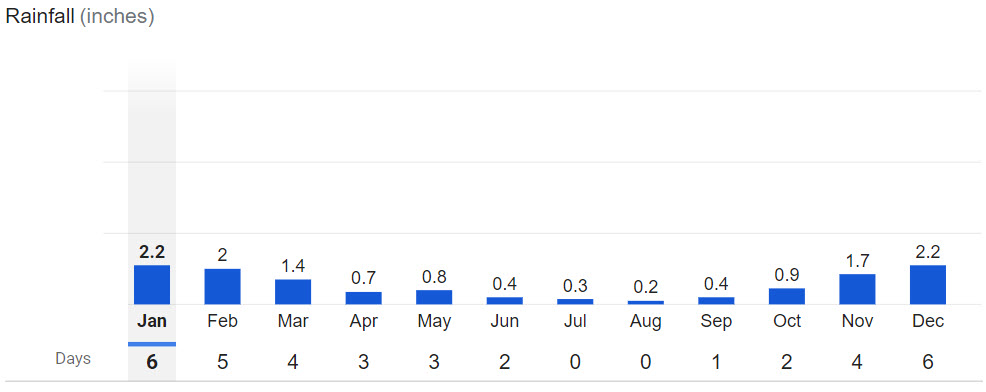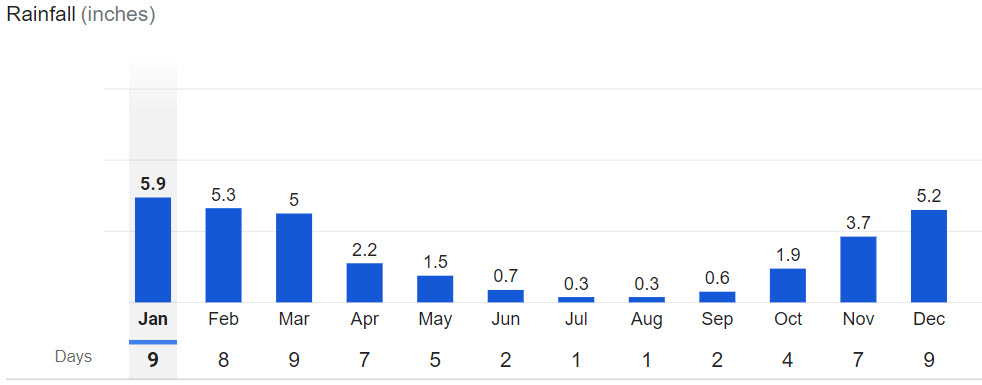Best time to ride
The season for the TruLassen routes is May through October. All things considered, the best conditions are usual May to mid June (cooler temps and streams are flowing) and, then, mid September to mid October (cooler temps and Fall Foliage).
Annual snowpack varies, but many of the routes are often clear by mid May. The road over Mt Lassen, however, may not open until July (check status here). Early October can have good weather and the bonus of fall foliage. Snow can, however, arrive as early as September, so keep an eye on forecasts.
July and August can be hot, especially in towns at lower elevation (e.g., Loyalton, Susanville, Chester, Greenville, Taylorsville, Graeagle, etc.). And the fire and smoke season is usually July through October. If you ride mid summer, expect hotter temps and be ready to carry more water.
Always check for fire or logging closures and campfire bans before your ride. Alerts and Notifications for relevant National Forests:

Average Monthly Temps
Loyalton

Susanville

Chester

Average Monthly rainfall
Loyalton

Susanville

Chester

Start and End Location
All of the routes, except for one*, start and end in Truckee, CA. It’s also possible to start/end in Reno, NV. If you need GPX tracks for connecting to Reno, just request it in the Member Forum.
*The “TruLassen Northern” route starts/ends in Susanville, CA.
Suggestions for where to stay and park your vehicle in Truckee are included in your Guide Pack.
Recommended Bike and Tires
The routes were designed with gravel or hardtail mountain bikes in mind. Given that you’ll be riding many miles on forest and gravel roads, your tires should be at least 40mm wide and have some tread (not full slicks). 45 or 50mm tire width offers a good balance between efficiency on pavement and handling on gravel.
A back/front tire combo of 40/42mm has worked fine for people motel touring. Yes, you can attempt it with skinner tires, however, your bike will have significantly more weight on it (food, water, gear, etc.). Bigger tires will reduce the chances of wheel or tire damage and help smooth out the bumpy roads.
Tubeless tires are strongly recommended because there are plenty of pokey things along these routes.
A low gear of 30/50 (smallest chainring/biggest cassette ring) should work fine for most people. Lower is even better if your bringing “everything” on your fully-loaded tour. A 30/46 granny has worked fine for motel tours.
Recommended Gear List
Basic Items
Tires: Minimum = WTB Nano 40mm in the back and WTB Resolute 42mm in the front. Bigger = WTB Venture 50mm
Backup battery: Small battery for 1 charge for your phone or bigger battery for 2 charges
Phone holder: Handlebar mount and a phone case (pick one that fits the model of your phone)
Water filter: Squeeze filter by Katadyn or Sawyer
GPS: The Garmin eTrex 20 has a long history as the default navigation device for bikepacking. It’s water resistant and rugged. With just 2 AA lithium batteries, it last up to 25 hours, which usually translates into about 3-4 full days of bikepacking. And you’ll need the handlebar mount.
Spare spoke: This fiber spoke is handy because you can “replace” a spoke and stabilize your wheel even if you break a spoke on the drive-side.
Spare tube: Tubolito tubes are extremely light and compact.
Tire plugs: Hopefully, you won’t need them, but tire plugs can repair larger punctures that your sealant can’t handle.
Chain lube: SCC lubricant works well in dusty conditions and lasts longer that other brands.
Bear bag: When camping, it’s very important to protect your food from bears. The Ursack is effective and can easily be rolled and strapped to your bike. At night, fill it with your food and tie it to a tree.